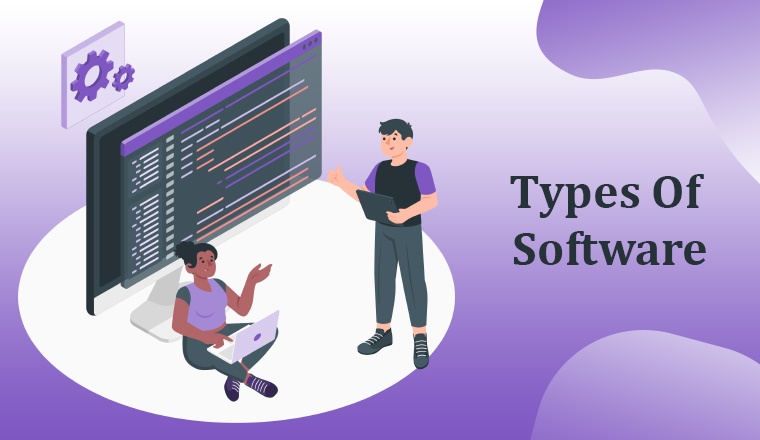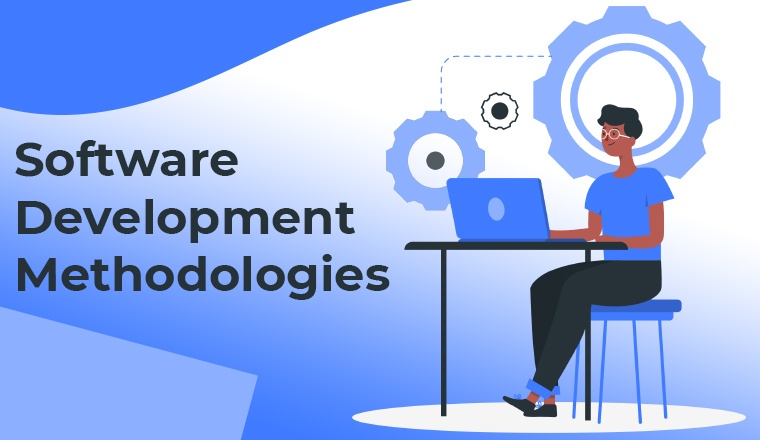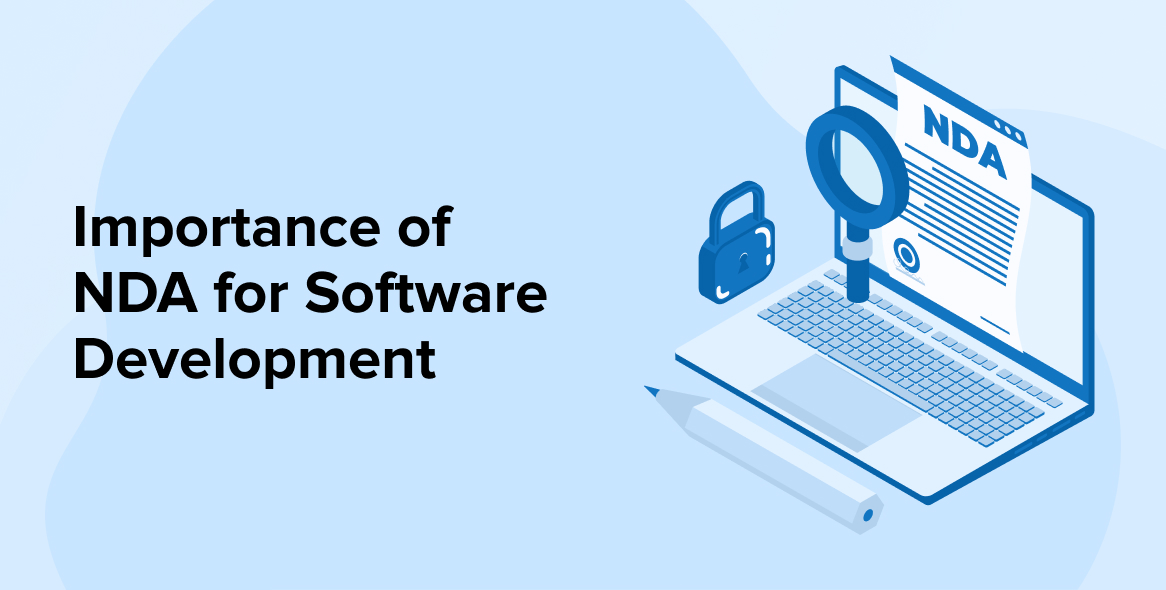
Software development is a process that software development companies follow in order to produce application software—be it accounting, hotel booking, or entertainment. Mastering the software development processes opens up several ways in business driven by technology.
To cut it short, it is the process of generating/creating/building software that is purpose-built to accomplish a certain objective that falls under custom software development.
In this article, we will be highlighting every aspect of the software development process including different software development tools, methodologies, development models, and frameworks!
1. What is Software?
Software is a computer programme – an organized collection of directives that computer systems can comprehend and execute with expression in binary code-based computer programming languages. Software companies are developing software to do a certain job, to increase efficiency, organize and process data in a particular fashion, or deliver amusement, such as entertainment shows and much more.
2. What is Software Development?
The method through which computer programmers create computer code is called software development. It can be referred to as Software Development Life Cycle (SDLC) as well includes numerous stages and provides development-related solutions that suit industry norms and customer’s requirements.
The SDLC possesses a global value for tech professionals to adapt while working on their computer code. When it comes to planning, building, and maintaining software, it provides a systematic framework for the software development team to follow. The main aim of the software development process is to produce qualitative services within a budgeted cost and timetable.
The creation of software is frequently carried out by tech professionals such as software developers, software engineers, and programmers. These responsibilities may combine, and their relationships may differ within organizations and areas of skills.
3. The Different Types of Software

There are several subcategories of software based on their technical characteristics. At a high level, we may classify software into different broad categories:
- Application software
- System software
- Programming Software
- Utility software
- Embedded software
3.1 Application Software
The most common type is application software that operates on both mobile and computer devices of different operating systems. Application software can take the form of entertainment apps such as Netflix, money transfer software like Paytm, location tracking apps like Google Maps, or an internet browser such as Chrome.
Native application software is built to operate on a certain operating system, such as Windows or macOS or Android, or iOS. Alternatively, they’re used as cross-platform apps.
3.2 System Software
System software serves as a foundation for other software by containing applications that control the computer’s operations, such as the OSs, Task managers, and disc operating system (or DOS). The database of systems is included with function libraries, services, printers, other hardware drivers, and so forth. Assemblers, compilers, file management tools, system utilities, and debuggers are all included in system software.
While application software is optional and will not cause your gadget to shut down if removed, the system software is necessary since it provides a platform for programs to run on.
3.3 Programming Software
Any software in the world is always created with the presence of programming software. The majority of code is written in English and adheres to a certain syntax or language. Following that, certain programming languages are translated to binary format. This is achieved using an additional sort of software known as a compiler.
Programming software sometimes referred to as a programming tool or software development tool, is a type of computer program that aids IT engineers or programmers, in the creation, debugging, and maintenance of other apps. However, there is a discussion about this, programming software is generally believed to be a subset of system software.
3.4 Utility Software
Utility software is likewise intended to do certain jobs, but in the backdrop and in connection with the scalability and security of the hardware. Antivirus tools, hard drive optimization tools, and device backup are all types of utility software.
3.5 Embedded Software
Embedded software (a.k.a. firmware) is a type of software programmed to operate on hardware that is not typically classified as a computer. Embedded software includes, but is not limited to, the software in an automobile. They are used in IoT (internet of things) machines, such as smart assistance gadgets like Google and Alexa.
Embedded software developers require a specialized area of talent and skills that application software developers frequently dislike. These skills and knowledge include the capacity to read technical drawings and component documentation, understand communication systems among processing units and other components and manipulate bits.
Embedded software development requires the use of a cross compiler, which translates code written on a computer into an accessible form for the targeted system. Additionally, debugging is distinct and involves an in-circuit emulator utilization and specialized hardware.
4. Several Types of Software Development Methodologies

A methodology is a specific technique and sequence of actions used to accomplish a certain objective, and software development approaches are no exception. A new software product faces the same six major steps of the development life cycle as any other product:
- Planning
- Design
- Development
- Testing
- Deployment
- Maintenance
Intermittently, a software development team is granted the authority to handle its own projects with the help of a looser framework. Occasionally, they are constrained by a somewhat rigid scaled agile framework of methods and laws. Often, the minute specifics of how a final software application will appear and work to accomplish its targeted utility are determined from the outset and implemented exactly as planned.
In other instances, many of the specifics will be determined as the software product progresses toward achieving a general goal defined for its usability. Experiments that have been validated and user input will guide the finer features.
Let’s have a glance at a few of the most prominent software development approaches and frameworks utilized previously and today.
4.1 Waterfall
Waterfall methodology was a ‘traditional’ technique for a lengthy period of time: from the 1970s to the 2000s. This technique is fairly rigid and straight in nature, with each step having its own set of objectives. The waterfall is a series of steps: a new step begins only after the prior one is completed. For instance, after you’ve entered the coding process, there is no ability to return and alter the product’s design.
Here are the six steps included in the waterfall method/development:
- Discovery – The crew compiles a comprehensive list of all needs for the assignment.
- Design – Solution Architects describe how applications will be built and operated.
- Coding – Developers work on the UI design based on the client’s objectives or requirements.
- Testing – Quality assurance professionals thoroughly inspect the whole program for flaws and irregularities.
- Deployment – The programmers combine the product’s numerous components and demonstrate a demo to customers.
- Maintenance – The team gives assistance and resolves issues. It is the most effective software development process because it covers everything.
4.2 Agile
Agile software development is a continuous process in which needs and solutions keep on changing throughout the duration of the software development project. Agile methodology is segmented into increments known as sprints. Once it is segmented, the objective and solutions of the project are often re-evaluated.
Whereas the waterfall process entails developing a functional product from start to finish and then delivering it, the agile approach entails releasing a minimal marketable product that benefits customers. The MVP is regularly changed and enhanced in response to user activity and input.
Agile has become the de facto development paradigm as the breadth and difficulty of software solutions have increased. Its proponents say that an agile strategy results in the software development that clients desire.
4.3 Scrum
Scrum is by far the most widely adopted agile development framework and is a simple process structure for agile development. A significant distinction from others is the division of theories and strategies into three categories:
- Roles
- Artifacts
- Time Boxes
4.4 Kanban
Kanban is an approach for implementing an Agile software development paradigm that is similar to Scrum. Whereas Scrum is designed on quick, crisp sprints, Kanban is an iterative and flexible technique.
It is built on visualizing processes, maximizing efficiency, and restricting the amount of work that may be done concurrently.
4.5 DevOps
DevOps has grown in popularity in the past few years as a methodology and collection of tools and activities. This has been facilitated by the statement that DevOps is capable of interacting with Agile and incorporates certain characteristics of Agile.
How they diverge is that Agile is a broader technique for research and development, whereas DevOps is focused on integrating software development, quality assurance, and IT functional departments into a single unit to allow seamless development and deployment of new updates.
Engineers are involved throughout the software development lifecycle, from starting development to final deployment, as part of DevOps. Prior to DevOps, the software development team used to deliver the completed software directly to operations, which was then responsible for deployment.
DevSecOps is a DevOps extension where everybody involved in the software development process is accountable for privacy.
4.6 GitOps
GitOps is another paradigm or collection of techniques for cloud-native software development that puts production and operational chores and tasks closer in a Deployment pipeline.
In other words, “it is a repository of continuous integration and a delivery system stacked on top of the semantic architecture.”
The model is founded on the notion that the Git repository should always contain clear specifications of the architecture that is actively wanted in the production system.
5. Different Software Development Frameworks
5.1 Angular for Front-end
Angular is amongst the most successful web development frameworks in the industry for obvious valid reasons. As a product of Google, this TypeScript-based client-side framework follows the MVC design pattern, making it a consistent and efficient method to build single-page web applications, from modest software tools to complex solutions with users worldwide.
Because it is built on the web components standard, Angular is a flexible and extensible framework that enables you to wrap specific individual Html parts that you can subsequently utilize. Because Angular is open source, you’ll have access to a large community of developers and a wealth of knowledge and tools to assist you in your endeavors.
5.2 React for Front-end
A javascript library created by Facebook, ReactJS, is used to create user interfaces. The Virtual DOM was a crucial factor in ReactJS’s success when it was released in 2013.
There are two ways in which ReactJS handles the DOM: actively modifying it and creating a virtual copy of it. In React, only modifications in the interface are upgraded when the DOMs are evaluated when a component is modified. As a result, modifications in the interface are rendered more quickly.
Now, talking about mobile apps, Facebook’s React Native is a javascript software framework for creating responsive user experiences for smartphones and tablets. It is now possible to create native cross-platform programs using Javascript instead of Objective-C or Swift thanks to the use of React Native.
5.3 Node.js For Back-end
As a JavaScript application server, Node.js is a cross-platform library that is great at networking and building web apps.
It’s an open-source framework and can be used free of charge. Event-driven and non-blocking models are the reasons Node.js is light, efficient, and compact in nature. It is also ideal for building real-time applications that operate throughout dispersed machines.
As a result, Node.js provides a wide range of JavaScript plugins that greatly facilitates the building of web applications leveraging Node.js.
5.4 ASP.NET/ASP.NET Core For Back-end
Microsoft is the place to go if you want to get the best out of your computer system. Talking about the best creation, ASP.NET and ASP.NET Core are two of Microsoft’s best web development frameworks. It has different features like code completion, multi-factor authentication, and web-page template syntax.
ASP.NET Core, on the other hand, is an open-source reworking of older Windows-only ASP.NET editions which enables you to build contemporary web services on Windows, Linux, macOS, or Docker.
5.5 Laravel For Back-end
Laravel is an open-source PHP framework that is completely free to use. With API assistance and a good number of modules, it has the potential to go even farther in its application scope. The MIT license allows you to access the source code on GitHub.
The Laravel framework maintains the beauty, accessibility, and usability of apps produced with it. Its enormous user base ensures that any technical concerns are dealt with in the shortest amount of time feasible.
6. Conclusion
To transfer an idea into existence, technology has come a long way. Software development is the process that makes everything possible with the aid of a facility. In this article, we discussed what goes behind the actual software that we access just with a tap of a fingertip on our screen.
The software development methodologies and frameworks described above can be chosen according to your business requirements since each one of them has its own unique functionality and execution process.
If you own a business and are full of ideas, reach out to us for further assistance!






This article explains software development and different types of software. Article mentioned all different software development ,methodologies and frameworks will be required to develop an efficient software system. After reading this article you will be able to understand how software systems work.
Most discussed word nowadays is software development. Everyone is talking about it. If you really want to understand what actually software development is then you can consider this article. It helps me alot to understand what software development is. It will clear all your doubts.